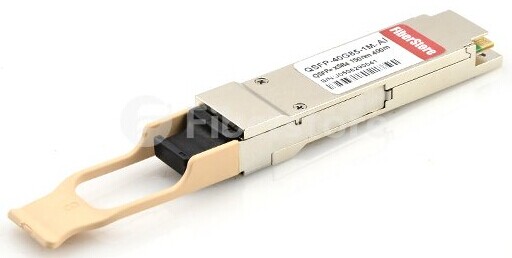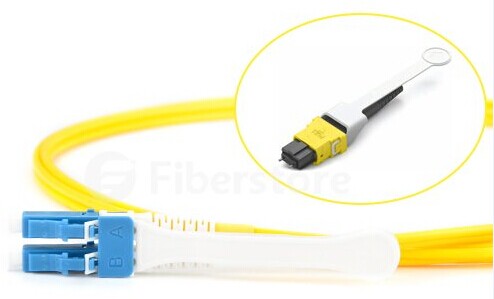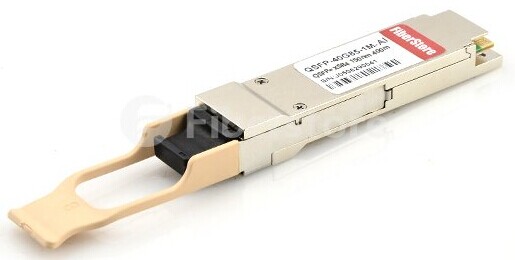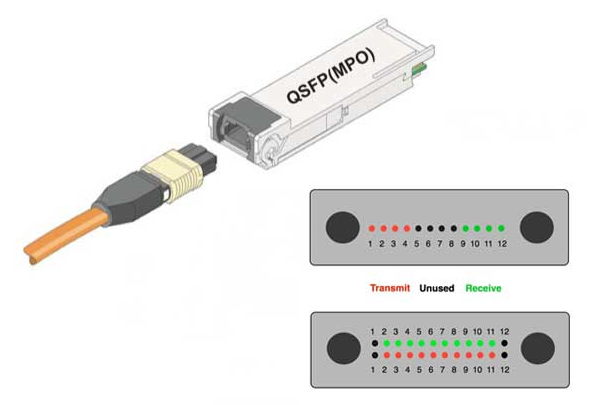With the development of the SFF-8436 Multi Source Agreement, many vendor are now offering a variety of IEEE- and MSA-compliant Quad Small Form-Factor Pluggable Plus (QSFP+) devices for fiber networks. And there are basic three 40G QSFP+ optics for this standard: 40G LR4 QSFP+ transceiver, 40G SR4 QSFP+ transceiver and 40G LR4 parallel single mode (PSM) transceiver. This article will take a close look at these 40G QSFP+ optics for high-density 40 GE connectivity.
40G LR4 QSFP+ Transceiver
Conforming to the 802.3ba (40GBASE-LR4) standard, the 40G LR4 QSFP+ transceiver together with the LC connector can support an optical link length up to 10 kilometers over single mode fiber. For example, the following Juniper JNP-QSFP-40G-LR4 compatible 40GBASE-LR4 QSFP+ transceiver offers 4 independent transmit and receive channels, supporting link distance of 10 km over single mode fiber. In the process of transmitting, this kind of transceiver has to introduce MUX/DEMUX to multiplex/de-multiplex optical signals.
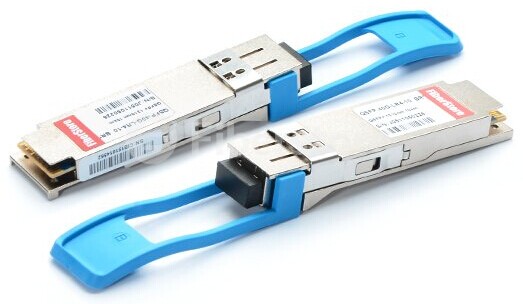
The working principle of this kind of QSFP+ transceiver is : in the transmit side, four 10 Gbp/s serial data streams are passed to laser drivers. The laser drivers control directly modulated lasers (DMLs) with wavelengths. the output of the four DMLs are optically multiplexed to a single-mode fiber through an industry-standard LC connector. In the receive side, the four 10 Gbp/s optical data streams are optically de-multiplexed by the integrated optical demultiplexer; then, each data steam is recovered by a PIN photodetector/transimpedance amplifier and passed to an output driver.
40G SR4 QSFP+ Transceiver
The 40G SR4 QSFP+ transceiver, conforming to the 802.3ba (40GBASE-SR4) standard, provides a 40G optical connection using MPO/MTP fiber ribbon connectors. Unlike the 40G LR4 QSFP+ transceiver, this kind of transceiver are used together with multi-mode fiber, supporting with a link length up to 100 meters on OM3 cable and 150 meters on OM4 cable.
The operating principle of the 40G SR4 QSFP+ Transceiver is : the transmitter convertsparallel electrical input signals into parallel optical signals through the use of a laser array. Then the parallel optical signals are transmitted parallelly through the multi-mode fiber ribbon. Reversely, the receiver converts parallel optical input signals via a photo detector array into parallel electrical output signals.
40G LR4 Parallel Single Mode (PSM) Transceiver
40G PSM transceivers are used to provide support for up to four 10Gb Ethernet connections on a QSFP+ port over single mode fiber. These transceivers support distance of up to 10 kilometers over single mode fiber using an 8 parallel fiber MPO interface. Each fiber pair can be broken out to a 10Gb Ethernet connection, compatible with up to four 10GBASE-LR interfaces. The MPO to 4 x LC single mode fiber patch cord can be used to breakout the 4 fiber pair of the MPO parallel connector to 4 separate fiber pairs.
Summary
To sum up, 40G SR4 QSFP+ transceivers are suitable for short-distance transmissions. So they are often used in data centers to interconnect two Ethernet switches with 12 lane ribbon OM3/OM4 cables. while 40G LR4 QSFP+ transceivers and 40G LR4 PSM transceivers are often used in long-distance transmission applications. Fiberstore offers a wide range of 40G QSFP+ transceivers, like 40GBASE-SR4, 40GBASE-LR4, 40GBASE-CR4 QSFP+ transceivers, etc. Besides, we also provide 40G direct attach cables, such as Juniper QFX-QSFP-DAC-1M, Cisco QSFP-4X10G-AOC3M and so on.

